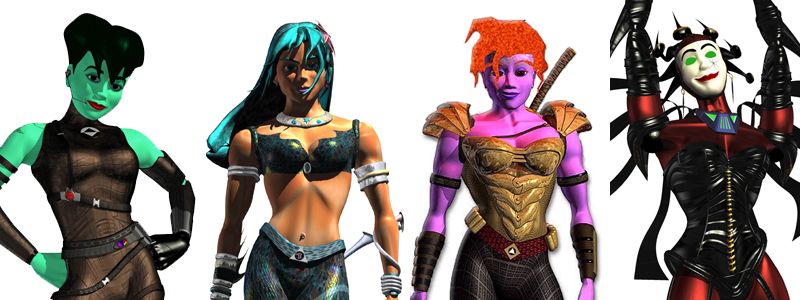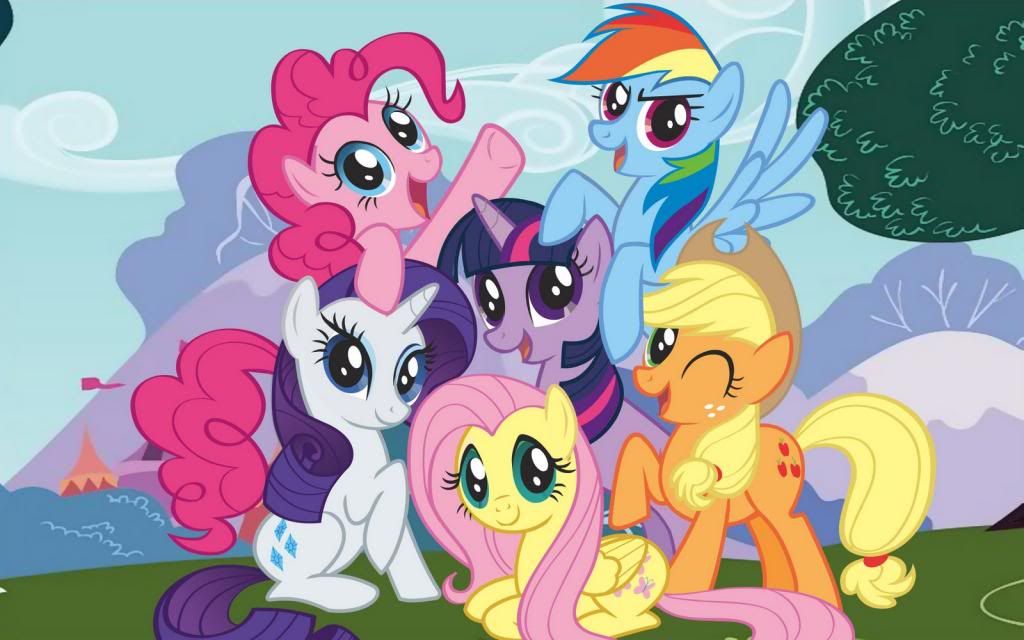One Christmas Eve when I was around seven, I couldn’t sleep. No matter what I did, the force of my breathless anticipation kept my eyes from closing. In those days, this was a serious matter; if I wasn’t sleeping, how could Santa come to deliver my gifts?
I can’t remember when I fell asleep or what gifts I received when I woke the next day, but I do remember the excitement of being a child at Christmas. Unfortunately, once you learn that your parents are going to put gifts under the tree whether or not you’re settled in for a long winter’s nap, it’s never quite the same.
Still, there may be one part of childhood that we can reclaim this holiday season: cartoons. Here I’ve recommended a selection of animated television shows that I either grew up with or grew to love as an adult. They may not contain the magic of Christmas, but the fact that you can watch them all year ‘round might make up for it.
(The blog has been a little lonely as of late, what with Ashley being off gallivanting in foreign lands, so feel free to leave a comment about your favourite female-friendly cartoon.)
Avatar: The Last Airbender
The show is set in a world in which certain people, called benders, possess the ability to manipulate one of the four elements. Able to control all of the elements, the Avatar must maintain balance between the four nations of Water, Fire, Earth, and Air. However, when twelve-year-old airbender Aang learns that he is the new Avatar, he runs away on his flying bison and gets frozen in a ball of ice for a hundred years. (It makes sense in context.) The show begins when Katara accidentally releases him from the ice, and she and her brother, Sokka, take on the task of keeping him safe while he masters the other three elements in order to fight the megalomaniacal Fire Lord Ozai.
This is one of those shows where there’s only one female character until, at the end of the first season, the writers suddenly seem to realize that there’s only one female character and make up for it by introducing a boatload in the second season.* Still, as the sole important girl throughout Season One, Katara manages to make her mark, teaching herself to waterbend and challenging the patriarchal ideals of her people. The second season starters include Toph, a blind Earthbender with a bad attitude and a brilliant talent, Ty Lee, an acrobat who blithely blocks benders’ abilities, Mai, an expert knife-thrower who seems unimpressed with the world, and Azula, a firebending prodigy and one of the best female villains of all time. Oh, and did I mention that despite the casting of the unspeakably atrocious film version, all of the characters are people of colour?
*Yes, I know Suki and Yue both play important parts in Season One. No, I don’t think their Season One treatment is anything like that of Azula, Mai, Toph, or even Season Three Suki.
Batman: The Animated Series
When I was four, I dressed up as Catwoman for Hallowe’en. When I was seventeen, I started reading Birds of Prey, featuring former Batgirl, Barbara Gordon. Now, at twenty-three, one of my favourite comic book characters is Renee Montoya. All of this is thanks to one show: Batman: The Animated Series.
Created to capitalize on the popularity of the Tim Burton-directed Batman films, this cartoon is a dark take on the Dark Knight. We all know the story: as a child, Bruce Wayne witnesses the murders of his parents in an alley and spends the next couple of decades training his mind and body to take on criminals, that superstitious, cowardly lot. He proceeds to beat up a ridiculous number of mentally ill or psychotic people so that the criminal justice system can place them in a prison from which they will invariably escape.
The difference with this version is that, despite ostensibly being meant for children, it delves into the psychological heart of Batman, his cohorts, and his antagonists. We don’t unquestioningly want Batman to triumph, because we understand why, for example, Mr. Freeze does the horrible things he does (or because we want to watch the Joker continue to be his perfectly bonkers, perfectly terrifying self). We especially love the wealth of female characters the show offers. Here we find what I would argue to be the definitive Catwoman and Poison Ivy, an always amazing Batgirl, and two characters designed for the show that would go on to become fan favourites in the comics: Renee Montoya and Harley Quinn. This is not only Batman as he deserves to be done, but Gotham as it deserves to be portrayed, filled with intriguing -- if often terrible -- people.
Adventure Time
Watching Adventure Time for the first time is something like being caught in a fever dream that lasts for eleven minutes. When I finished that first episode, I legitimately said, “What did I just watch?” My co-blogger Ashley just queued up the next episode.
The show is set in a post-apocalyptic world where just about anything -- paper, crystal, slime, and bubblegum, among other things -- can be a person. We follow our hero, Finn the Human, and his best friend Jake, a dog with shape-shifting powers, as they go on a series of adventures across the bizarre landscape. Finn and Jake encounter a host of interesting characters, from the ruler-by-day, scientist-by-night Princess Bubblegum to the unrepentantly self-confident Lumpy Space Princess to the soulful, bass-playing vampire queen, Marceline.
The show is a cracktastic, random nightmare, a bright, shiny childhood dream, and a poignant portrait of survivors making their way in a world gone mad, sometimes in the same episode. Not only is it breathtakingly creative, it is also subversive, taking apart many of the preconceived notions we have about what makes a princess. If you can deal with the weirdness and the bromance that comprises the heart (and most of the screentime) of the show, it is well worth the effort.
ReBoot
This recommendation is partly inspired by a childhood spent standing on two frisbees, pretending I was using a zip board. My ever-so-stylish backward cap tricked out with a crudely drawn black and white icon, I masqueraded as the boy hero Enzo. That is, until the game sprite AndrAIa came into the picture. Then the costume changed to include a starfish instead.
If none of this sounds familiar, it may be because you didn’t grow up in Canada in the ‘90s. Premiering in 1994, ReBoot was the first half-hour long, completely computer-animated TV series. It tells the story of Bob, a Guardian who protects the city of Mainframe. In order to do this, he and the other principal characters must enter games and try to beat the User. Complicating matters are the delightfully creepy Megabyte and Hexadecimal, local viruses and primary antagonists.
Besides its tremendous innovation, what makes this show special are its compelling female characters. Dot Matrix is a businesswoman who runs the local diner and hangout spot, helps Bob to protect Mainframe, and eventually oversees the military during a war. Mouse is a hacker, a sort of anti-hero with a sword, a ship, and a penchant for being awesome. AndrAIa is a game sprite with powers of paralysis who, after growing up in the Games, comes back wielding a trident and a newly honed sense of humour. Hexadecimal, whose face is a shifting mask and whose lips never move when she speaks, embodies a fascinating chaos, a bit like a female version of the Joker. Mainframe, and its main ladies, are well worth getting to know.
My Little Pony: Friendship is Magic
When my nephew was born, I made a single request: that I be allowed to show him My Little Pony: Friendship is Magic. In the age of Netflix and YouTube, it’s a foregone conclusion that he will one day see my brother’s favourite Transformers episodes; however, I’d like him to have the chance to experience the glory of brightly coloured horses being supportive of each other in a series of fantasyland scenarios.
Although ReBoot and Batman are the shows of my childhood, MLP:FiM is the show I wish had been around when I was little. It begins with the arrival of Twilight Sparkle, a work-obsessed unicorn who is relocated to the town of Ponyville when her mentor, Princess Celestia, decides that she needs to get out more. There she makes five friends: brash flygirl Rainbow Dash, self-conscious animal lover Fluttershy, dependable farmer Applejack, haughty fashion designer Rarity, and wacky party animal Pinkie Pie. Together, they learn the lessons that everypony should know about friendship (and not being an awful person).
The thing we love about this show, aside from its tendency to feature musical numbers inspired by the work of Stephen Sondheim, is the fact that it is unashamedly about friendships between women. Every combination of the six is explored, showing the audience a number of different kinds of relationships, from the kinds of friends who engage in fierce athletic competition to the ones who chill at the spa together. Not only are there different types of friendships, but different types of characters. It’s a refreshing change from all those shows that adhere to the Smurfette Principle.





No comments:
Post a Comment